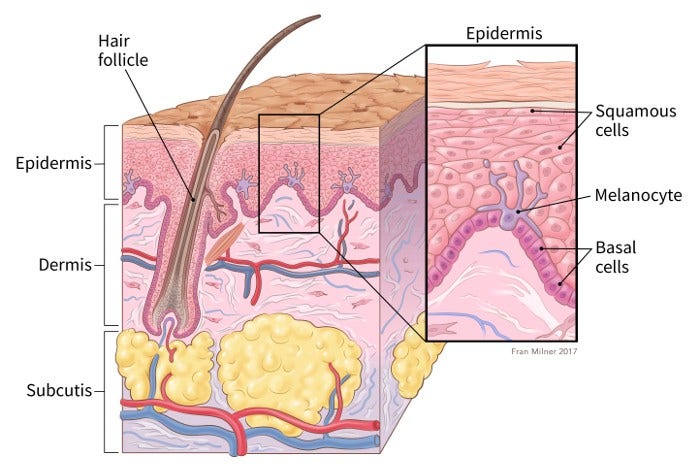- English
- Esta página
- Página inicial
- Arabic (اللغة العربية)
- Chinese (简体中文)
- French (Français)
- Haitian Creole (Kreyòl Ayisyen)
- Hindi (जानकारी)
- Korean (한국어)
- Polish (język polski)
- Portuguese (Português)
- Russian (Русский)
- Spanish (Español)
- Tagalog (Tagalog)
- Ukrainian (Українська)
- Vietnamese (Tiếng Việt)
- All Languages
Español
PDFs by language
Our 24/7 cancer helpline provides information and answers for people dealing with cancer. We can connect you with trained cancer information specialists who will answer questions about a cancer diagnosis and provide guidance and a compassionate ear.
![]()
Chat live online
Select the Live Chat button at the bottom of the page
Our highly trained specialists are available 24/7 via phone and on weekdays can assist through video calls and online chat. We connect patients, caregivers, and family members with essential services and resources at every step of their cancer journey. Ask us how you can get involved and support the fight against cancer. Some of the topics we can assist with include:
- Referrals to patient-related programs or resources
- Donations, website, or event-related assistance
- Tobacco-related topics
- Volunteer opportunities
- Cancer Information
For medical questions, we encourage you to review our information with your doctor.
What Is Melanoma Skin Cancer?
Melanoma is a type of skin cancer that develops when melanocytes (the cells that give the skin its tan or brown color) start to grow out of control.
Melanoma is much less common than some other types of skin cancers. But melanoma is more dangerous because it’s much more likely to spread to other parts of the body if not found and treated early.
Where do skin cancers start?
Most skin cancers start in the top layer of skin, called the epidermis. There are 3 main types of cells in this layer:
- Squamous cells: These are flat cells in the upper (outer) part of the epidermis, which are constantly shed as new ones form.
- Basal cells: These cells are in the lower part of the epidermis, called the basal cell layer. These cells constantly divide to form new cells to replace the squamous cells that wear off the skin’s surface. As these cells move up in the epidermis, they get flatter, eventually becoming squamous cells.
- Melanocytes: These are the cells that can become melanoma. They normally make a brown pigment called melanin, which gives the skin its tan or brown color. Melanin protects the deeper layers of the skin from some of the harmful effects of the sun.
The epidermis is separated from the deeper layers of skin by the basement membrane. When a skin cancer becomes more advanced, it generally grows through this barrier and into the deeper layers.

Melanoma skin cancers
Melanoma is a cancer that begins in melanocytes.
Most melanomas start in the skin. Another name for these cancers is cutaneous melanoma.
Melanomas can start anywhere on the skin, but in people with lighter skin color they are more likely to start on the trunk (chest and back) in men and on the legs in women. The neck and face are other common sites.
People with darkly pigmented skin have a lower risk of melanoma at these more common sites.
Types of melanoma skin cancer
There are different types of skin melanoma. The most common types are:
- Superficial spreading melanoma: This type makes up about 7 in 10 melanomas of the skin. These tumors tend to grow outward on the surface of the skin (at least at first), so they might be noticed as a dark spot on the skin that is changing shape and/or getting bigger. Some of these melanomas start in existing moles (see below), but others do not.
- Nodular melanoma: This type accounts for about 2 in 10 skin melanomas. These tumors often appear as a distinct, raised bump (nodule) on the skin that is often dark brown or black, but it can also be pink or red. This can make them hard to find early. Nodular melanomas tend to grow down into deeper layers of the skin fairly early, so they’re often at a more advanced stage than superficial spreading melanomas by the time they are found.
- Lentigo maligna melanoma: This type of melanoma tends to occur in older people. It often first appears as an abnormally shaped tan or brown spot in an area that gets a lot of sun (such as the face, ears, or arms), and it tends to grow slowly (or change in other ways) over time.
- Acral lentiginous melanoma (acral melanoma): This type of melanoma starts in areas that don’t get a lot of sun exposure, such as the palms of the hands, soles of the feet, or under the nails. Acral melanomas make up a large portion of melanomas in people with darker skin tones.
Melanomas in other parts of the body
Melanomas can also form in other parts of the body, such as:
- Inside the eye (known as ocular melanomas). Most of these start in the uvea (the middle layer of the eyeball) and are known as uveal melanomas.
- Inside the nose, mouth, throat, genital, or anal area (known as mucosal melanomas)
These are much less common than melanoma of the skin.
Other types of skin cancer
There are many other types of skin cancer. Skin cancers that are not melanomas are sometimes grouped as non-melanoma skin cancers because they develop from skin cells other than melanocytes. They tend to behave very differently from melanomas and are often treated with different methods.
Basal cell and squamous cell skin cancers
Basal cell cancer (BCC) and squamous cell cancer (SCC) are by far the most common types of skin cancer. In fact, they are more common than any other form of cancer in the United States. These cancers (especially BCCs) are much less likely to spread (metastasize) to other parts of the body than are melanomas, so they are usually less concerning and are treated differently. These cancers are discussed in Basal and Squamous Cell Skin Cancer.
Less common skin cancers
Other types of non-melanoma skin cancer are much less common than basal and squamous cell cancers and are treated differently. They include:
- Merkel cell carcinoma
- Kaposi sarcoma
- Cutaneous (skin) lymphoma
- Skin adnexal tumors (tumors that start in hair follicles or skin glands)
- Various types of sarcomas
Together, these types account for less than 1% of all skin cancers.
Benign skin tumors
Many types of benign (non-cancerous) tumors can develop from different types of skin cells.
Benign tumors that start in melanocytes
A mole (nevus) is a benign skin tumor that develops from melanocytes. Almost everyone has some moles. Nearly all moles (nevi) are harmless, but having some types can raise your risk of melanoma. See Risk Factors for Melanoma Skin Cancer for more about moles.
A Spitz nevus is a kind of mole that sometimes looks like melanoma. It’s more common in children and teens, but it can also be seen in adults. These tumors are typically benign and don’t spread. But sometimes doctors have trouble telling Spitz nevi from true melanomas, even when looking at them under a microscope. Therefore, they are often removed, just to be safe.
Benign tumors that develop from other types of skin cells
- Seborrheic keratoses: tan, brown, or black raised spots with a “waxy” texture and a “stuck on” appearance
- Hemangiomas: benign blood vessel growths, often called strawberry spots
- Lipomas: soft growths made up of fat cells
- Warts: rough-surfaced growths caused by some types of human papillomavirus (HPV)
Most of these tumors rarely, if ever, turn into cancers. There are many other kinds of benign skin tumors, but most are not very common.
- Written by
- References

The American Cancer Society medical and editorial content team
Our team is made up of doctors and oncology certified nurses with deep knowledge of cancer care as well as journalists, editors, and translators with extensive experience in medical writing.
Curiel-Lewandrowski C. Melanoma: Epidemiology and risk factors. UpToDate. 2023. Accessed at https://www.uptodate.com/contents/melanoma-epidemiology-and-risk-factors on September 6, 2023.
Mitchell TC, Karakousis G, Schuchter L. Chapter 66: Melanoma. In: Niederhuber JE, Armitage JO, Doroshow JH, Kastan MB, Tepper JE, eds. Abeloff’s Clinical Oncology. 6th ed. Philadelphia, Pa: Elsevier; 2020.
Ribas A, Read P, Slingluff CL. Chapter 92: Cutaneous Melanoma. In: DeVita VT, Lawrence TS, Rosenberg SA, eds. DeVita, Hellman, and Rosenberg’s Cancer: Principles and Practice of Oncology. 11th ed. Philadelphia, Pa: Lippincott Williams & Wilkins; 2019.
Swetter S, Geller AC. Melanoma: Clinical features and diagnosis. UpToDate. 2023. Accessed at https://www.uptodate.com/contents/melanoma-clinical-features-and-diagnosis on September 6, 2023.
Last Revised: October 27, 2023
American Cancer Society medical information is copyrighted material. For reprint requests, please see our Content Usage Policy.
American Cancer Society Emails
Sign up to stay up-to-date with news, valuable information, and ways to get involved with the American Cancer Society.


